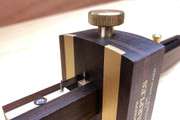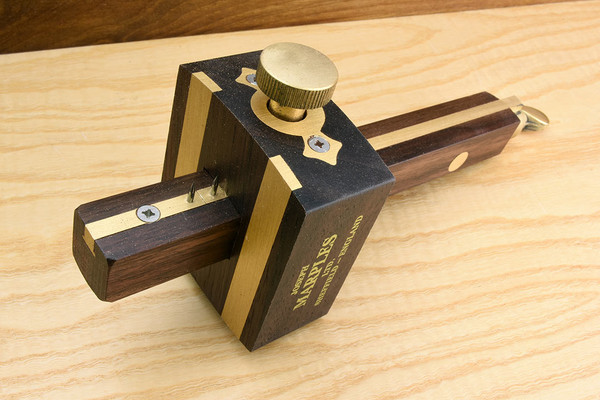Made by Joseph Marples in Sheffield, the classic British pull slide combination marking and mortice gauge has a single pin on one side and two pins on the other (one fixed, one adjustable).
The dual pins are used for marking a mortice that is to be drilled and pared - chiselled mortices are cut from a single gauge line as the width of the chisel determines the width of both mortice and tenon.
The screw on the head clamps onto the stem through the pull slide, locking both in place simultaneously.
English marking gauges are used with the stock and the corner of the stem both in contact with the workpiece. Stand the timber firmly against a bench dog or in the open jaw of the vice and sight along it, pressing the head of the marking gauge up against the prepared face side or edge. The top of the gauge is rolled towards you like the throttle of a motorbike as you push the gauge away, insinuating the pin or cutter onto the surface and carefully placing your mark. The curved underside of the stem provides a clear view of the pin and the mark, whilst light creeping in between the board and either the stem or the head provides instant warning if contact with the workpiece is lost.
It is good practice to test your gauge settings on a piece of accurately planed scrap before committing to a mark on the component, retaining the scrap piece for the duration of the project will allow you to double check your original settings should this be necessary.
It is good practice to make several passes, lightly at first, then deeper until a clear mark is obtained.
Approx Measurements, (Length x Width x Depth)
- Stem Dimension: 190 x 18 x 17mm (7½ x ¾ x ¾")
- Head Dimension: 65 x 56 x 28mm (2½ x 2¼ x 1⅛")
- Rosewood and Brass








